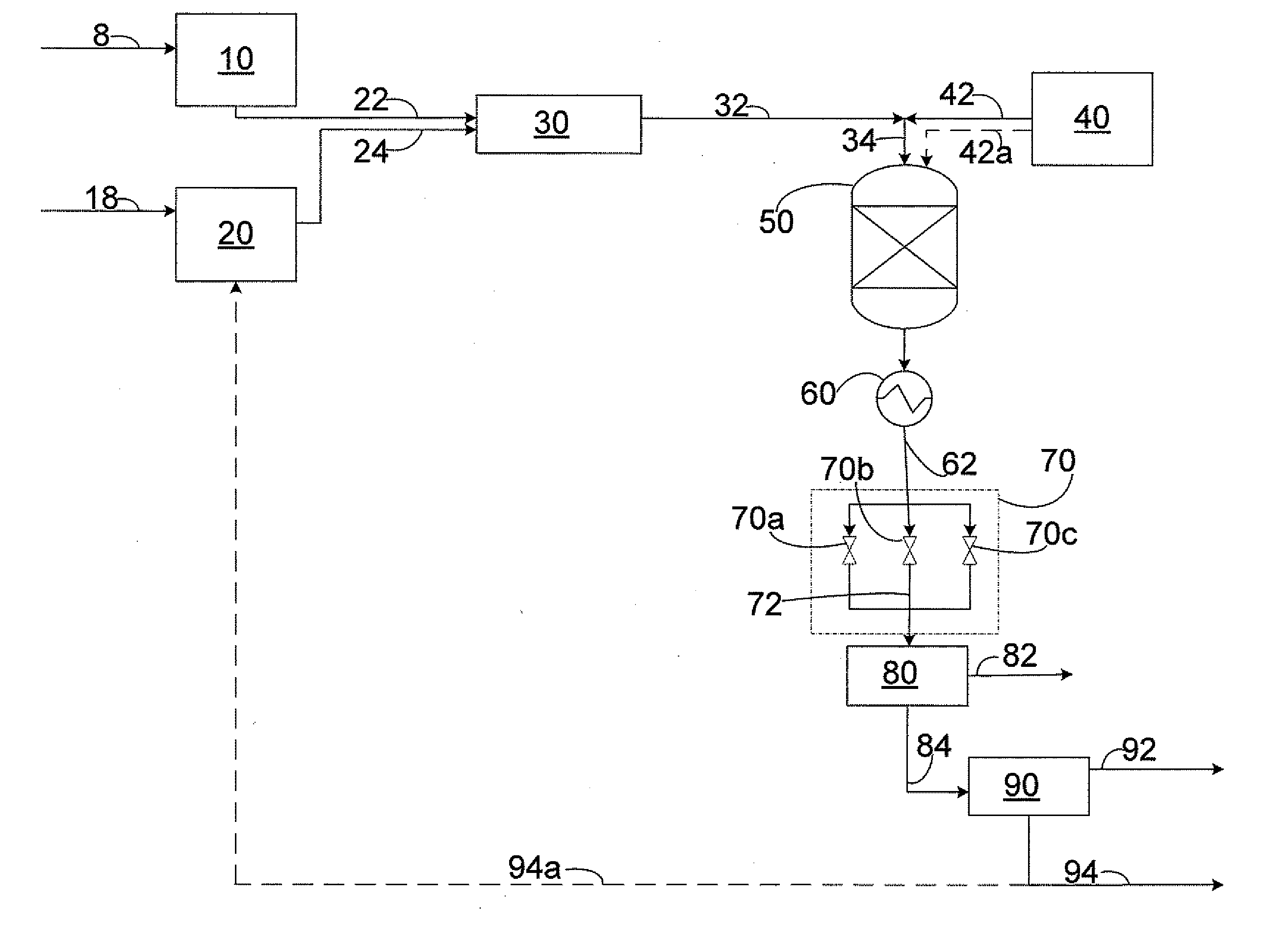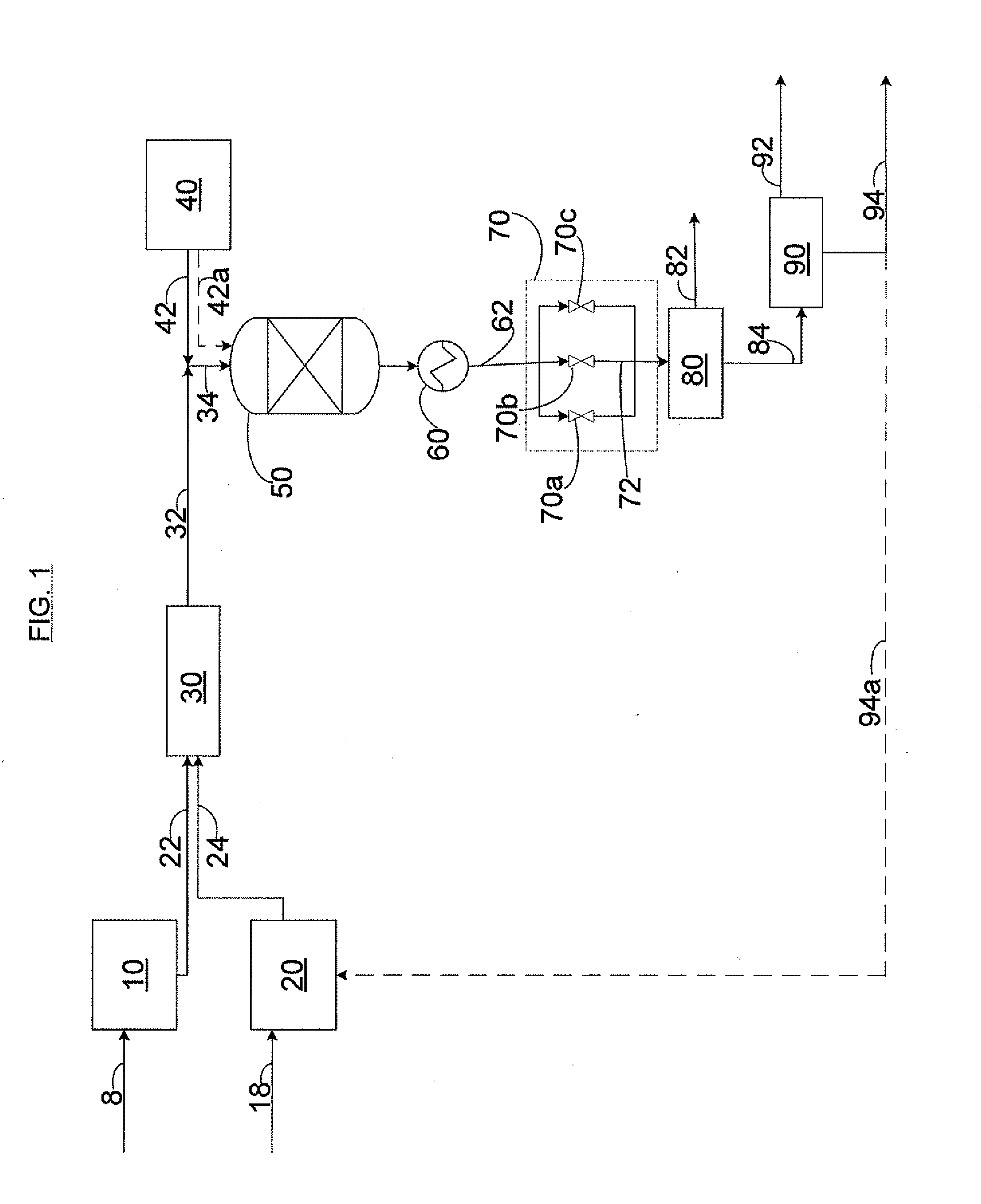Petroleum Upgrading Process
a technology of heavy oil and upgrading process, which is applied in the direction of hydrocarbon oil cracking process, thermal non-catalytic cracking, refining by water treatment, etc., can solve the problems of not adjusting unable to account for the expected increase in future demand, and it is difficult to refine heavy oil by conventional refining process to produce end petroleum products with specifications. , to achieve the effect of improving the overall mixing
- Summary
- Abstract
- Description
- Claims
- Application Information
AI Technical Summary
Benefits of technology
Problems solved by technology
Method used
Image
Examples
example # 1
Example #1
Simultaneous Mixing of all Three Streams
[0043]Whole range Arabian Heavy crude oil (AH), deionized water (DW), and oxidant stream (OS) were pressurized by respective metering pumps to approximately 25 MPa. Volumetric flow rates of AH and DW at standard condition were 3.06 and 6.18 ml / minute, respectively. Oxidant stream had an oxygen concentration of 4.7 weight percent oxygen in water (e.g. 10.05 weight percent hydrogen peroxide with 89.95 weight percent water). Hydrogen peroxide was dissolved in water completely before subjected to pump. Flow rate of oxidant stream was 1.2 ml / minute.
[0044]The streams were subjected to individual pre-heaters. AH was preheated to 150° C., DW was preheated to 450° C. and OS was preheated to 450° C. AH, DW and OS were combined using a cross fitting having 0.125 inch internal diameter to form the reactant mixture. The reactant mixture was then fed to the reaction zone. The reaction zone comprised a main hydrothermal reactor which had 200 ml int...
example # 2
Example #2
Illustrative Embodiment of the Present Invention
[0045]Whole range Arabian Heavy crude oil (AH), deionized water (DW), and oxidant stream (OS) were pressurized by respective metering pumps to approximately 25 MPa. Volumetric flow rates of AH and DW at standard condition were 3.06 and 6.18 ml / minute, respectively. Oxidant stream had an oxygen concentration of 4.7 weight percent oxygen in water (e.g. 10.05 weight percent hydrogen peroxide with 89.95 weight percent water). Hydrogen peroxide was dissolved in water completely before subjected to pump. Flow rate of oxidant stream was 1.2 ml / minute.
[0046]The streams were subjected to individual pre-heaters. AH was preheated to 150° C., DW was preheated to 450° C. and OS was preheated to 450° C. AH and DW were combined using a tee fitting having 0.125 inch internal diameter to form combined stream (CS). CS had a temperature of about 377° C., which was above critical temperature of water. OS was integrated with CS by an integrating ...
PUM
| Property | Measurement | Unit |
|---|---|---|
| frequency | aaaaa | aaaaa |
| frequency | aaaaa | aaaaa |
| temperature | aaaaa | aaaaa |
Abstract
Description
Claims
Application Information
 Login to View More
Login to View More - R&D
- Intellectual Property
- Life Sciences
- Materials
- Tech Scout
- Unparalleled Data Quality
- Higher Quality Content
- 60% Fewer Hallucinations
Browse by: Latest US Patents, China's latest patents, Technical Efficacy Thesaurus, Application Domain, Technology Topic, Popular Technical Reports.
© 2025 PatSnap. All rights reserved.Legal|Privacy policy|Modern Slavery Act Transparency Statement|Sitemap|About US| Contact US: help@patsnap.com


